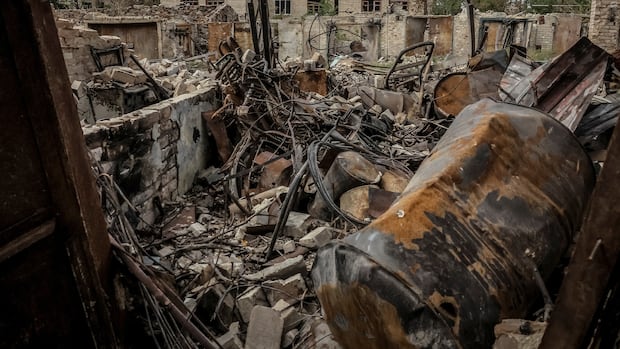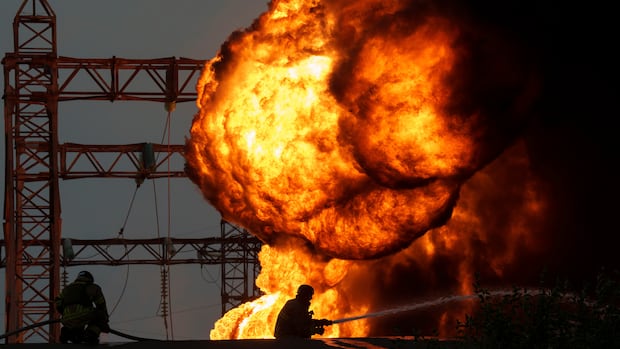
Ukrainian Foreign Minister Dmytro Kuleba resigned on Wednesday, the highest-profile casualty so far of a major government reshuffle ordered by President Volodymyr Zelenskyy at a crucial juncture in the 30-month war against Russia.
After Zelenskyy, 43-year-old Kuleba was the best-known face of Ukraine overseas, meeting leaders around the world and lobbying for military and political support in fluent English.
Kuleba’s resignation letter was posted on Facebook by the speaker of parliament, and it comes after five ministers stepped down on Tuesday.
Zelenskyy has said changes to the government were necessary to achieve the results required by Ukraine.
“Autumn will be extremely important for Ukraine. And our state institutions should be configured so that Ukraine achieves all the results that we need — for all of us,” he said on Tuesday.
Russian forces are advancing in the east of Ukraine while Ukrainian troops have made a bold incursion into Russia’s Kursk region.
Moscow has intensified drone and missile attacks in recent weeks and Kyiv launched a mass drone attack on Russia’s energy infrastructure over the weekend.
In the deadliest attack this year, Ukrainian officials say at least 50 people — civilians and soldiers — were killed in a Russian strike on a military institute in the central town of Poltava.
On Tuesday, at least 50 people, including soldiers, were killed by two missiles in the central Ukrainian town of Poltava in the deadliest single attack of the war this year. Russia’s Defence Ministry said on Wednesday that its strike on a military institute in Poltava had targeted soldiers and foreign instructors who were involved in attacks on civilian targets inside Russia.
Zelenskyy is expected to nominate his candidate for a new foreign minister on Wednesday, with first deputy foreign minister Andrii Sybiha among the front-runners.
On Tuesday, Strategic Industries Minister Oleksandr Kamyshin, Deputy Prime Minister Olha Stefanishyna and the justice, environment and reintegration ministers stepped down.
At least five portfolios have been vacant since ministers were fired or resigned earlier this year, including the important agriculture and infrastructure ministries.
Opposition lawmaker Iryna Herashchenko said: “It’s a government without ministers … an intellectual and personnel crisis that the authorities are closing their eyes to.”
She called for a government of national unity that would end the tight grip on the reins of power held by Zelenskyy’s political team.
Under normal circumstances, Ukrainians would have headed to the polls this year, as Zelenskyy was elected for a five-year term in 2019. But elections are prohibited under martial law, which Ukraine enacted as the war began in February 2022.
Later this month Zelenskyy travels to the United States, where he hopes to present a “victory plan” to U.S. officials.
7 killed in Lviv
Meanwhile, an overnight Russian drone and missile attack on Ukraine’s western city of Lviv close to the border with NATO member Poland killed seven people, including three children, local officials said on Wednesday.
Ukraine’s air force said it had shot down seven out of 13 missiles and 22 out of 29 drones across the country during Russia’s latest attack. Poland scrambled aircraft for the third time in eight days to maintain the safety of its airspace, the Polish armed forces’ operational command said, with Lviv only 70 kilometres from its border.
Among those killed in Lviv were a nine-year-old and a 14-year-old, regional Gov. Maksym Kozytskyi said on the Telegram messaging app. Ukraine’s Interior Minister Ihor Klymenko said the attack had injured around 40 people.
Lviv city Mayor Andriy Sadovyi told national television that more than 70 structures, including schools, homes and clinics, had been damaged.
Russian airstrikes hit energy facilities and critical infrastructure in nine Ukrainian regions over the past 24 hours, Ukrainian officials said on Wednesday.
Energy facilities in the western region of Lviv; Sumy and Kharkiv in the northeast; Donetsk in the east; east-central Dnipropetrovsk; and Mykolaiv in the south were attacked, the energy ministry said on Telegram.
The ministry did not provide additional details on the scale of recent damage to the energy grid, but the national grid operator Ukrenergo said on Telegram it was increasing emergency cut-offs on Wednesday.
The grid attacks came with UN nuclear agency chief Rafael Grossi due to visit the Russian-occupied Zaporizhzhia nuclear power plant in southeast Ukraine on Wednesday.
The plant fell to Russian troops soon after Moscow’s invasion of Ukraine in February 2022 and is not operating now.
Both Russia and Ukraine have been making more ‘rear area attacks’ against each other, similar to Tuesday’s strike against a Ukrainian military institute, says Andrew Rasiulis, a fellow with the Canadian Global Affairs Institute. Oil, electrical and manufacturing sites have come under increasing fire in what he describes as a ‘war of attrition.’
Both sides have frequently accused each other of shelling it. Moscow and Kyiv both deny the accusations.
Grossi, who is director of the International Atomic Energy Agency (IAEA), has described the situation at the plant as “very fragile.”
Analysts say an explosion at the Zaporizhzhia plant would produce radiation and likely trigger panic, but the radiation risk beyond the immediate blast area would be relatively low and nothing like the scale of the 1986 Chernobyl disaster. Also, if the wind is in an easterly direction, radiation could be pushed toward Russia.

